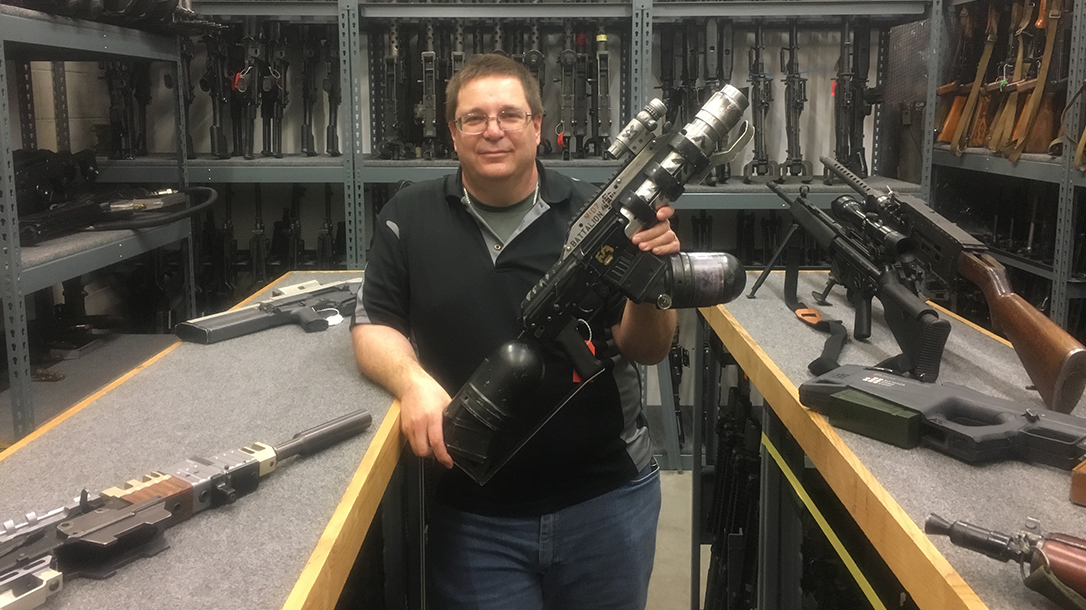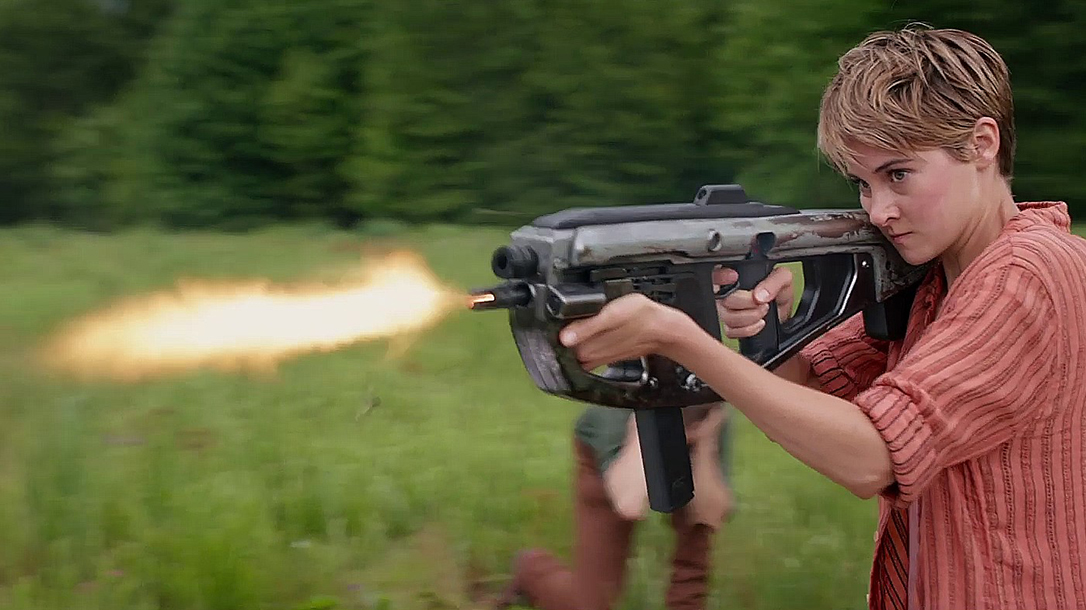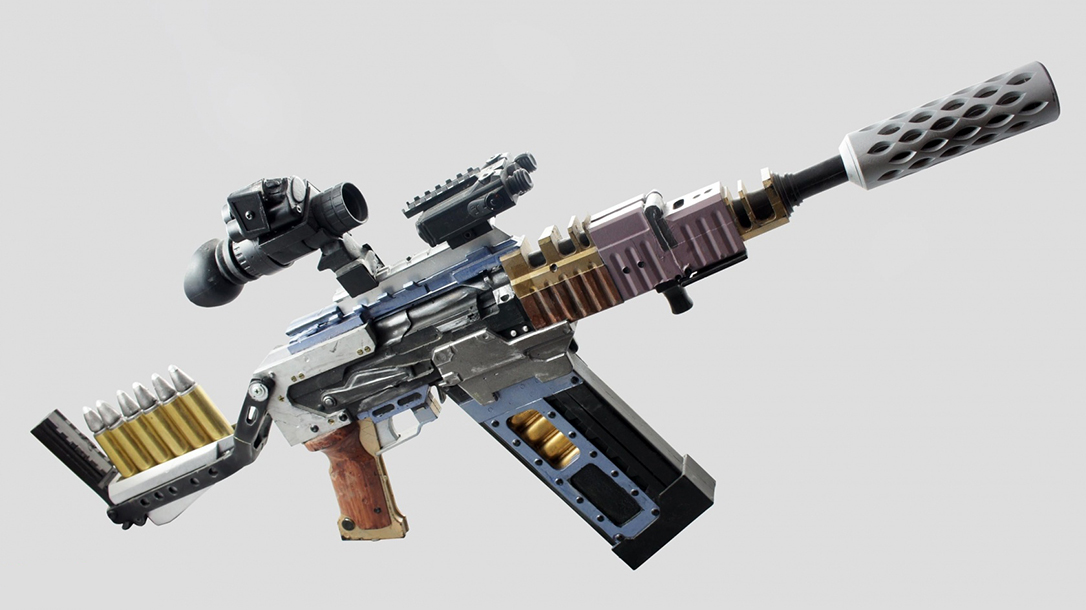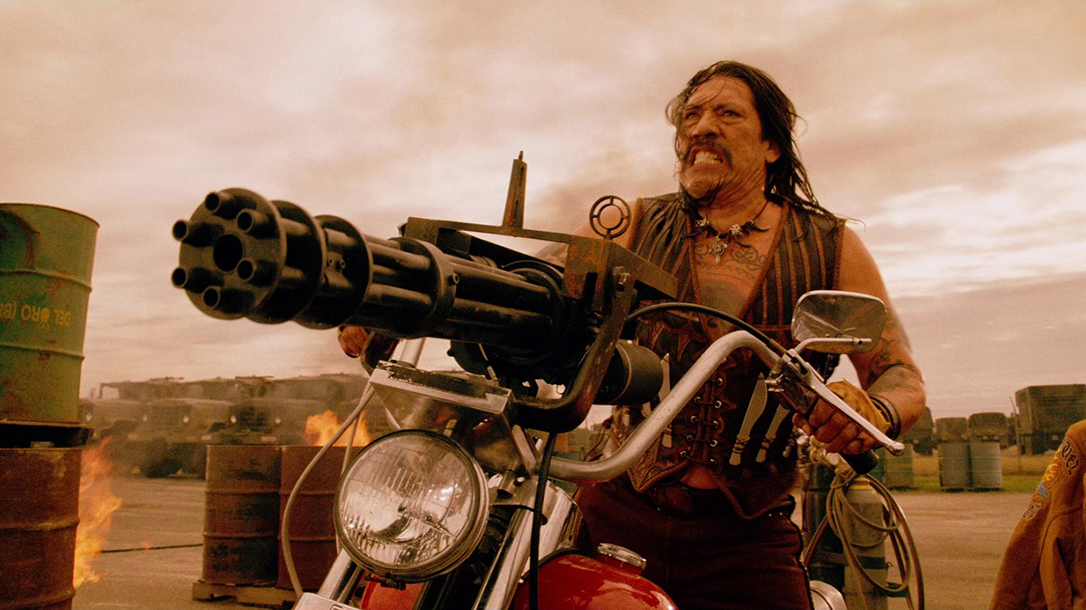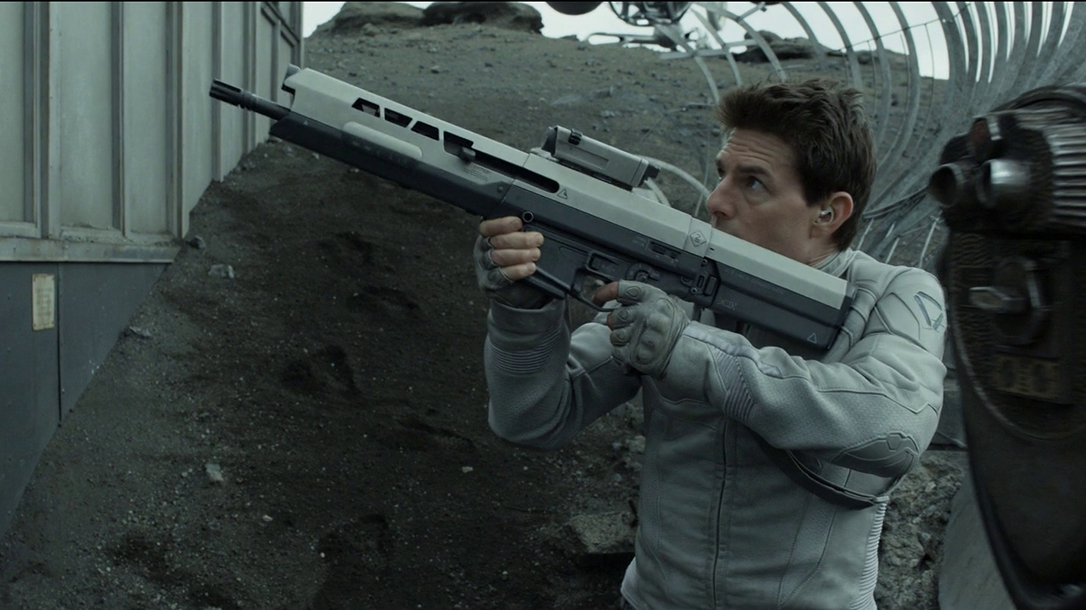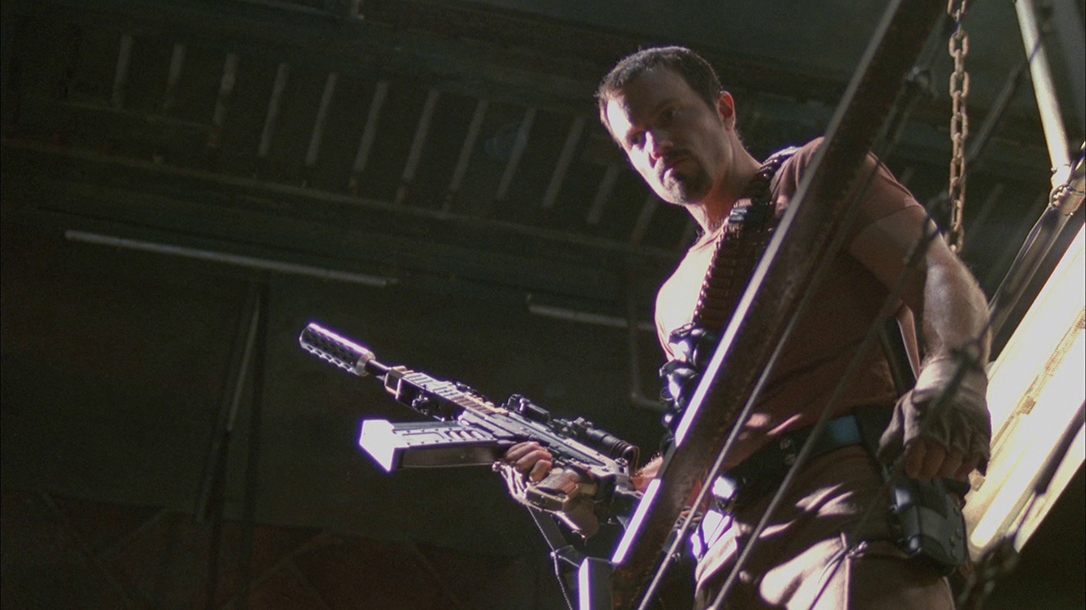Today, Hollywood relies on firearms that look deadly serious but aren’t meant to hurt and certainly not kill. Of course, it wasn’t always this way. In the early days of Hollywood—even before there was a Hollywood—filmmakers would simply use real guns and very real bullets.
A common practice was to have expert shooters fire off camera over the heads of actors. And there were accidents—some of them deadly. In one now somewhat infamous story, James Cagney refused to do a scene in Angels with Dirty Faces that was to involve a live machine gun. Instead, the director had the shots fired afterwards, and a ricocheting bullet passed through the spot where Cagney would have been standing.
Advertisement — Continue Reading Below
With safety a continuing issue on all movie sets—especially after tragic accidents that have cut short the careers and lives of actors such as Brandon Lee—all firearms are now treated with absolute respect, and they’re tightly controlled to avoid future accidents.
One point needs to be made absolutely clear while we’re here: Hollywood doesn’t technically use “prop guns.” Instead, real firearms are used on set whenever the weapon is needed to look and operate in a realistic manner. However, these are specially modified for the task at hand.
Larry Zanoff, the assistant manager of the Weapons Department at Independent Studio Services (ISS), which provides custom modification to firearms for film and TV use, offered some exclusive behind-the-scenes information. Here’s what he said.
Advertisement — Continue Reading Below
Can you explain what a movie gun is exactly?
There is no such thing as a “movie gun,” “fake gun” or “prop gun.” If it’s a gun, it’s a gun! While we do use some rubber doubles as well as replicas, there is still a need for real firearms on set. We do modify our weapons to function with blanks, but they are still firearms, with all the same safety concerns and legal standards associated with any firearm from the “real” world.
Safety must be a big concern, especially because actors have been killed on movie sets.
That’s exactly what the better productions hire what is known in showbiz as “on-set armorers.”
This is whose job it is on set to manage the firearms to avoid accidents and injuries?
Absolutely. The on-set armorer works in conjunction with the assistant director, fire marshal, stunt coordinator, FX and studio safety rep.
Advertisement — Continue Reading Below
What is the difference between a gun armorers and gunsmiths?
The armorers are those professionals who guide the production, cast and crew through the complex business of safely using blank-firing weapons while on set.
What special permits and FFLs does ISS have to do the work it is doing?
Independent Studio Services must comply with all federal, state, city and local laws to do the work required.
This is why weapons aren’t left lying around between shots, and never left with the actors or crew. So where are the weapons kept when not used in filming?
They must be stored in a federal/state-approved lockup facility.
Advertisement — Continue Reading Below
Not every firearm used for filming is real. Are there rubber, non-firing versions that aremade when shooting isn’t required?
Yes. Rubber and replica weapons are used when appropriate.
You noted that film productions rely on real guns, but what is involved in making the transformation? And how much time is involved in transforming a fully functional firearm into something for a movie?
Each and every firearm is different and presents its own unique challenges. The rule of thumb: somewhere between four hours and two days.
What are blanks exactly, and how do they function in essentially guns that used to fire live ammo?
Blanks fire off with a firing pin hitting a primer and igniting powder, just as you would expect, but they lack a projectile. The goal is to create the illusion of gunfire on set.
Advertisement — Continue Reading Below
So how much of this is acting as opposed to practical effects with the modified firearm?
If the “space gun” recoils, and the actor reacts to it like its real, his/her acting is more believable, so the movie is more believable. Then it’s a good movie. If it looks like the actor is holding a rubber prop—with no action and no recoil—then it’s not believable, and probably a bad movie.
Are there challenges both for you as an armorer and for the actor?
Let’s not forget that these weapons were never designed to function with blanks. We are forcing them to do that which they were not intended to. Whole new technologies have to be invented to make that happen. That’s something that happens at Independent Studio Services that does not happen anywhere else in the same way.
What presents more of a challenge: modifying firearms to fire blanks and still look the same, such as for a historical or present-day story, or those that require cosmetic changes as well?
Life is easy if the weapon exists in the real world. We acquire it, adapt it to function with blanks, train the actor in its correct and safe use, and away we go. Things get more interesting when the item requested only exists in the production’s fertile imagination. As prop professionals, it is our job to take the director’s vision and make it a reality up on screen. In other words, this is when we have to make “movie magic.”
Advertisement — Continue Reading Below
This is when you must dress up a firearm. A notable example might be Han Solo’s blaster from the Star Wars movies. That was a heavily modified Mauser C96 Broomhandle. How do those guns come about?
These are all the product of the creative minds of prop and weapons professionals in the cinematic world of make believe—except we make it believable. By taking existing firearms and “cladding” them in custom shells, we manage to create the illusion of the impossible.
Given all this, what are your all-time favorite movies/shows that you’ve worked on?
Working with Quentin Tarantino on Django Unchained was a special experience. He is a very dynamic filmmaker. Gun Stories with Joe Mantegna is a very well-made documentary about firearms that is fun to be a part of due to its educational approach to firearms and, of course, because of Joe Mantegna and Outdoor Channel’s excellent cast and crew.
Moviegoers expect guns to be loud, but one pet peeve from firearms enthusiasts has been that sound suppressors aren’t ever handled realistically. When will Hollywood start making silencers used in movies sound more realistic?
Honestly, that’s really more of a sound department question.
Advertisement — Continue Reading Below
Fair enough. What about some of the other sound effects? When will Hollywood stop using the sound of a gun being racked when it’s completely unnecessary?
That’s an editor/director question. Keep in mind that the production is trying to tell a story, and sometimes things are added or omitted for dramatic effect, even if they might not be as realistic as you might expect. That’s the difference between an entertainment-based show and a non-fiction documentary.
On that note, do you have battles with the sound guys, such as hammers clicking on Glocks, AR rifles, etc., and other sounds that shouldn’t be there?
Sometimes, but again, there is only so much you can do to avoid that. At a certain point, it’s up to the sound department and editors to try and fix it.
What is the most realistic gunfight out there in your opinion?
Any list of “best gunfight” films must include Michael Mann’s Heat. I also think that A Bridge Too Far and Saving Private Ryan did a very realistic job with the on-screen battle/gunfire scenes.
Advertisement — Continue Reading Below
Our thanks to Larry Zanoff for taking the time to speak with us about the movie magic of firearms!
This article is from the fall 2017 issue of Ballistic Magazine. Grab your copy at OutdoorGroupStore.com.
